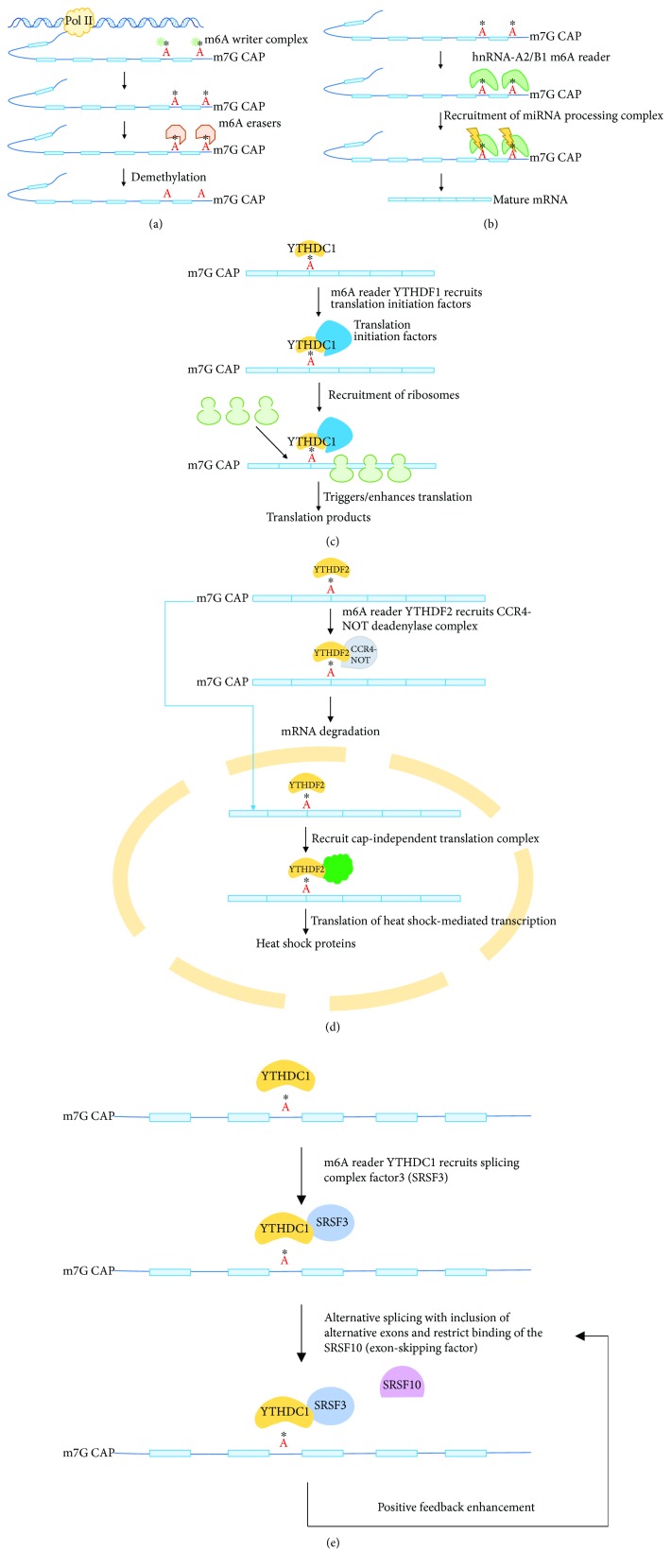Figure 2.
Dynamic regulation of RNA m6A levels by the m6A processing machinery and the known functions of m6A in regulation of RNA metabolism. (a) The coordination between m6A writers and m6A erasers maintains the m6A levels in accordance with the physiological conditions and the development and growth stages. (b) m6A reader hnRNP-A2/B1 mediated microRNA processing. The hypothesis for m6dA-mediated regulation of gene expression is that m6dA readers (to be identified) are highly affinitive to and bind to the m6dA sites, then the readers may recruit their interaction factors involved in transcription initiation, repression, and so on. (c) Via binding to m6A sites to recruit the translation initiation factors, m6A reader YTHDF1 triggers initiation of translation and releases the RNA transcripts to the ribosomes. (d) By recruiting the CCR4-NOT deadenylase complex after binding to m6A sites, the reader YTHDF2 could enhance mRNA decay. On the other hand, facing heat shock, YTHDF2 could transport to the nuclei to trigger the cap-independent translation to translate the heat shock-related RNA transcripts into heat shock proteins. (e) YTHDC1 binds to the m6A sites on the pri-mRNA transcripts and recruit splicing complex factor 3 (SRSF3) to trigger alternative splicing with inclusion of alternative exons. Meanwhile, by recruiting SRSF3, YTHDC1 could restrict binding of SRSF10, further enhancing alternative splicing.

